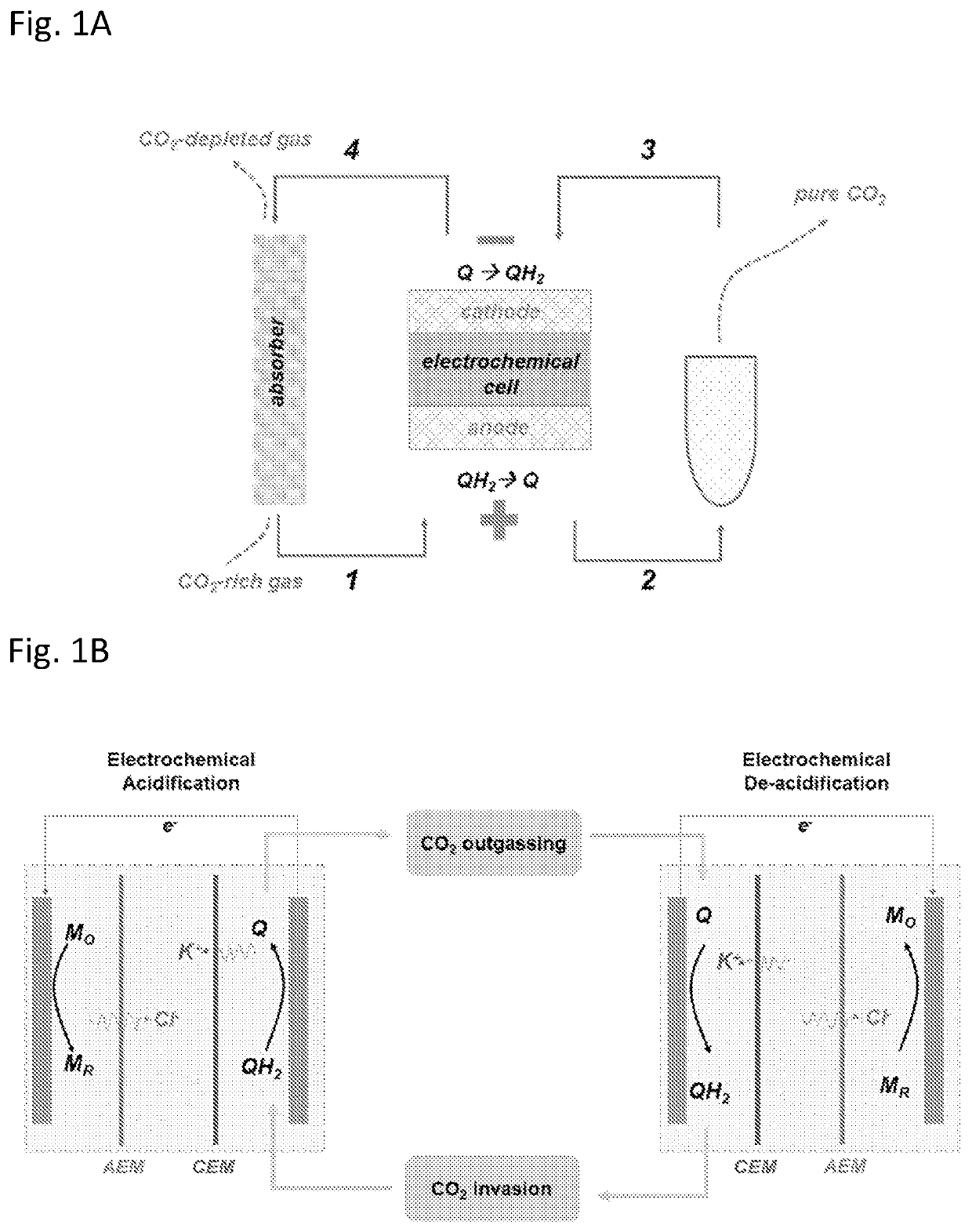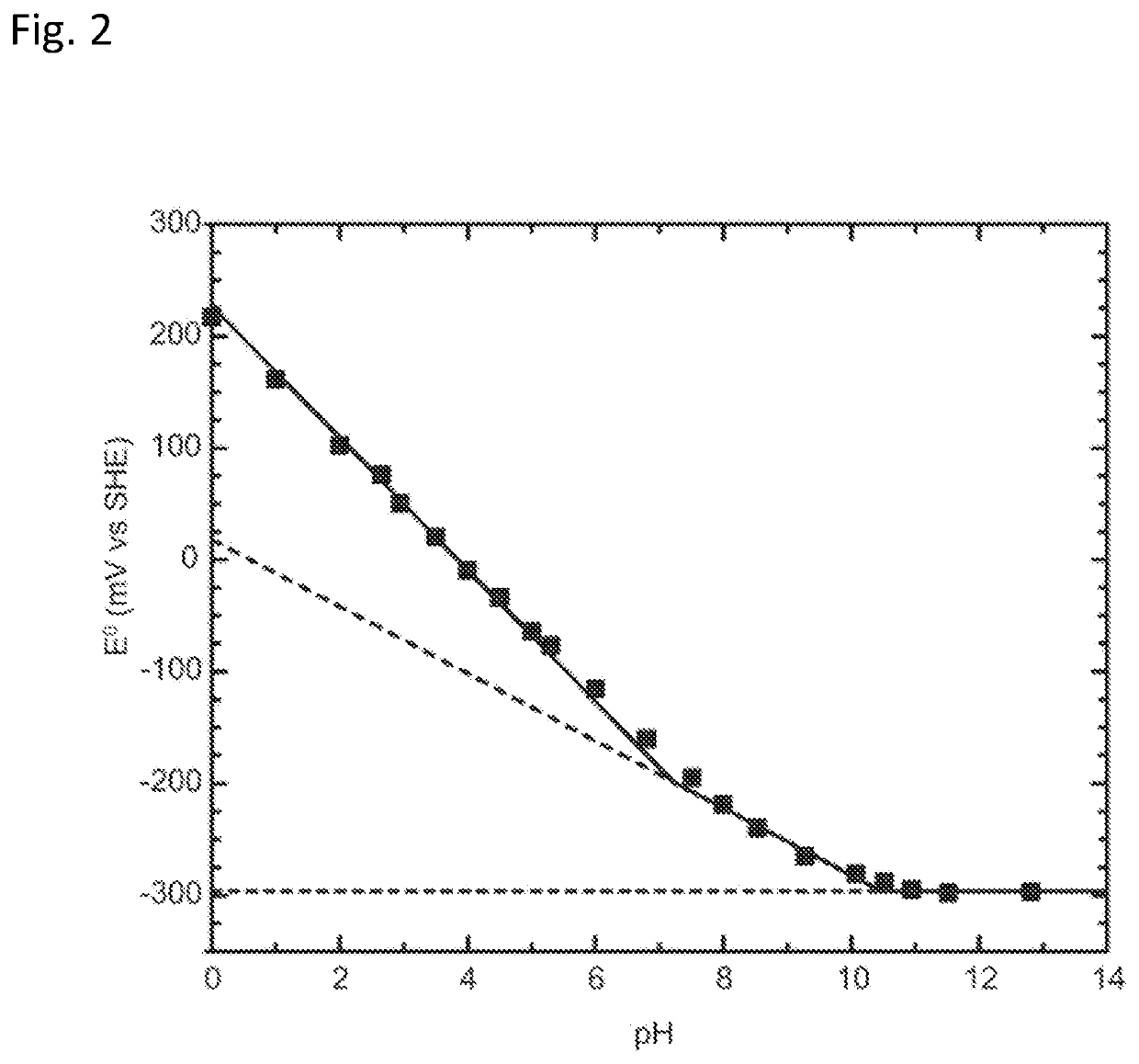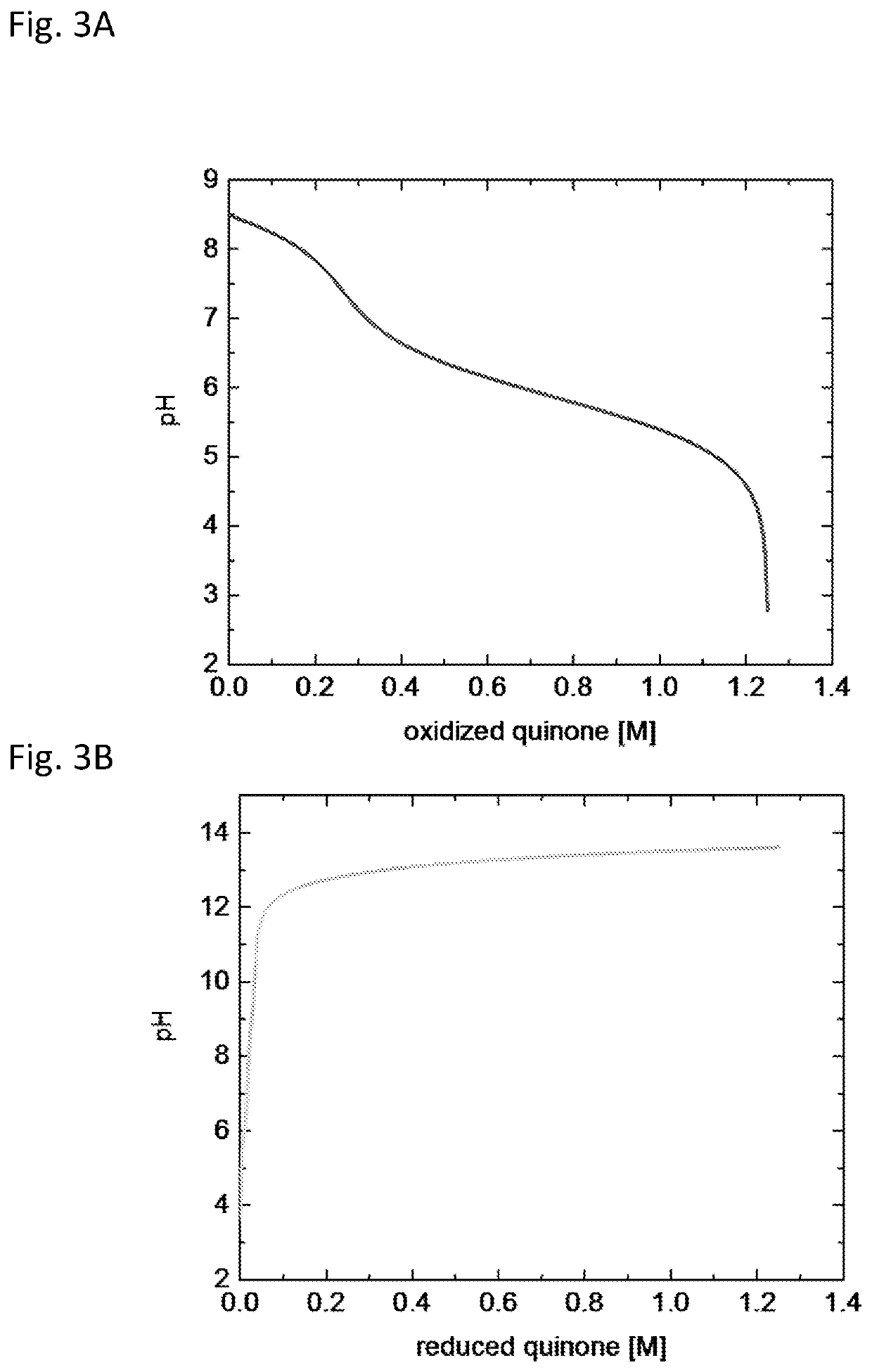Proton coupled electrochemical co2 capture system
a technology of electrochemical co2 and capture system, which is applied in the direction of separation of products, separation of separation processes, and separation of dispersed particles, etc., can solve the problems of not being able to produce electricity fast and currently not fast enough
- Summary
- Abstract
- Description
- Claims
- Application Information
AI Technical Summary
Benefits of technology
Problems solved by technology
Method used
Image
Examples
examples
Calculations of the Ideal CO2 Capture Cycle
[0088]We have carried out a thermodynamic analysis of the energetic cost of a method of the invention, idealized as a four-step CO2 capture cycle with a 2H+, 2e− quinone / hydroquinone redox, involving: (1→2) acidification; (2→3) CO2 release; (3→4) solution de-acidification; and (4→1) CO2 invasion as described schematically in FIGS. 1A-1B. In FIGS. 1A-1B, processes 1→2 and 3→4 are constant DIC, electrochemical processes and are associated with electrical energy input / output. Processes 2→3 and 4→1 involve gas-liquid exchange of CO2 at open circuit potential and constant TA. All processes are assumed to be isothermal.
[0089]To evaluate the proposed cycle, we first performed a preliminary calculation to determine the equilibrium TA at State 1, i.e., after CO2 invasion and before electrochemical acidification, for given values of DIC and CO2 partial pressure. FIGS. 4A-4B shows the result of this analysis, in which solutions were found to the syste...
PUM
| Property | Measurement | Unit |
|---|---|---|
| Molar density | aaaaa | aaaaa |
| Concentration | aaaaa | aaaaa |
| Electrical conductor | aaaaa | aaaaa |
Abstract
Description
Claims
Application Information
 Login to View More
Login to View More - R&D
- Intellectual Property
- Life Sciences
- Materials
- Tech Scout
- Unparalleled Data Quality
- Higher Quality Content
- 60% Fewer Hallucinations
Browse by: Latest US Patents, China's latest patents, Technical Efficacy Thesaurus, Application Domain, Technology Topic, Popular Technical Reports.
© 2025 PatSnap. All rights reserved.Legal|Privacy policy|Modern Slavery Act Transparency Statement|Sitemap|About US| Contact US: help@patsnap.com



